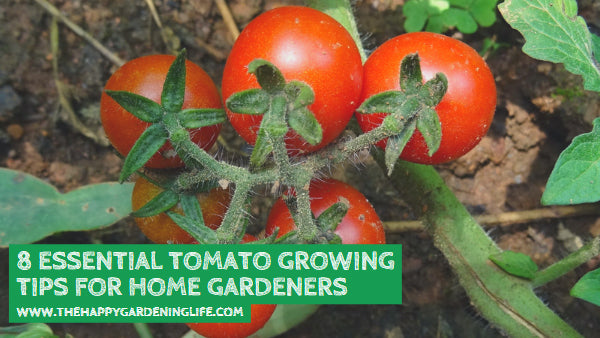
8 Essential Tomato Growing Tips For Home Gardeners
Share
 Tomatoes are raised in almost every vegetable garden not just for the simple fact that they taste good, but also because they’re quick to grow and easy to take care of. So if you want to try your hand at tomato growing, here are some useful reminders to help you succeed!
Tomatoes are raised in almost every vegetable garden not just for the simple fact that they taste good, but also because they’re quick to grow and easy to take care of. So if you want to try your hand at tomato growing, here are some useful reminders to help you succeed!
Tomatoes like to be situated in a nice and warm spot with access to full sunlight. They can be planted on the ground, but you’re short on space, you can use garden containers with proper drainage.
To obtain the healthiest and most delicious homegrown tomatoes, you’ll definitely want to use heirloom non-hybrid seeds.
Don’t forget to water the plants in moderation and add some organic compost to encourage better growth.
Growing tomatoes is truly a great way to start a garden. Get more tomato gardening tips below and click the social buttons to share this info on your favorite social networks!
Top 8 Tomato Growing Tips for Home Gardeners
1. Start with a homegrown seedling or a locally raised one—not a big-box-store seedling that may have been shipped in from warmer zones, where more tomato diseases are endemic and overwinter.
2. Growing a mix of both hybrids and open-pollinated types (including older heirloom varieties) may offer you the best overall insurance policy against failure. Whichever varieties you choose, read up on them first, and select not just by a pretty photo or extravagant flavor claims, but also for traits like regional adaptation, disease resistance, and days to harvest.
3. Open-pollinated tomatoes are not mass-produced, uniform widgets. With non-hybrid varieties, there can be great swings from seed-seller to seed-seller, based on where and how they raised the seed for generations, and what they had in mind as they selected each crop.
4. With open-pollinated tomatoes, it’s possible to save seed and get a next generation that reliably resembles the parent plant. However, careful selection is key to good seeds next time around. Therefore, seed saving begins at seed-starting time. Sow only the biggest seeds in the packet, discarding the runts, continuing your selection process ruthlessly at each life stage, right through to harvest.
5. Growing tomatoes on black plastic increases soil heat that tomatoes love; provides weed suppression, and helps with soil-splash control–keeping some of those soil-borne spores from getting up onto the plant by creating a barrier. Stripping the lower leaves from the plants to eliminate the “ladder” for spores splashing up may help as well.
6. Think also about good air circulation to limit diseases. Never grow tomatoes trained together onto teepees or tripods; any tangle of tomatoes too closely spaced like that means a humid environment that invites more tomato troubles.
7. Sometimes, tomatoes fail to set fruit. Assuming you did not feed too much nitrogen, it may be weather-related. Fruit set can also be hampered by over-feeding nitrogen, or by irregular watering. Hot, dry conditions at blossom time prevents proper pollination and can causes buds or tiny fruit to drop.
8. A good soil that’s high in organic matter (compost, compost, compost) is your best ally. Don’t overfeed, especially with nitrogen-rich fertilizers; it can invite trouble.
Article Source: awaytogarden.com
